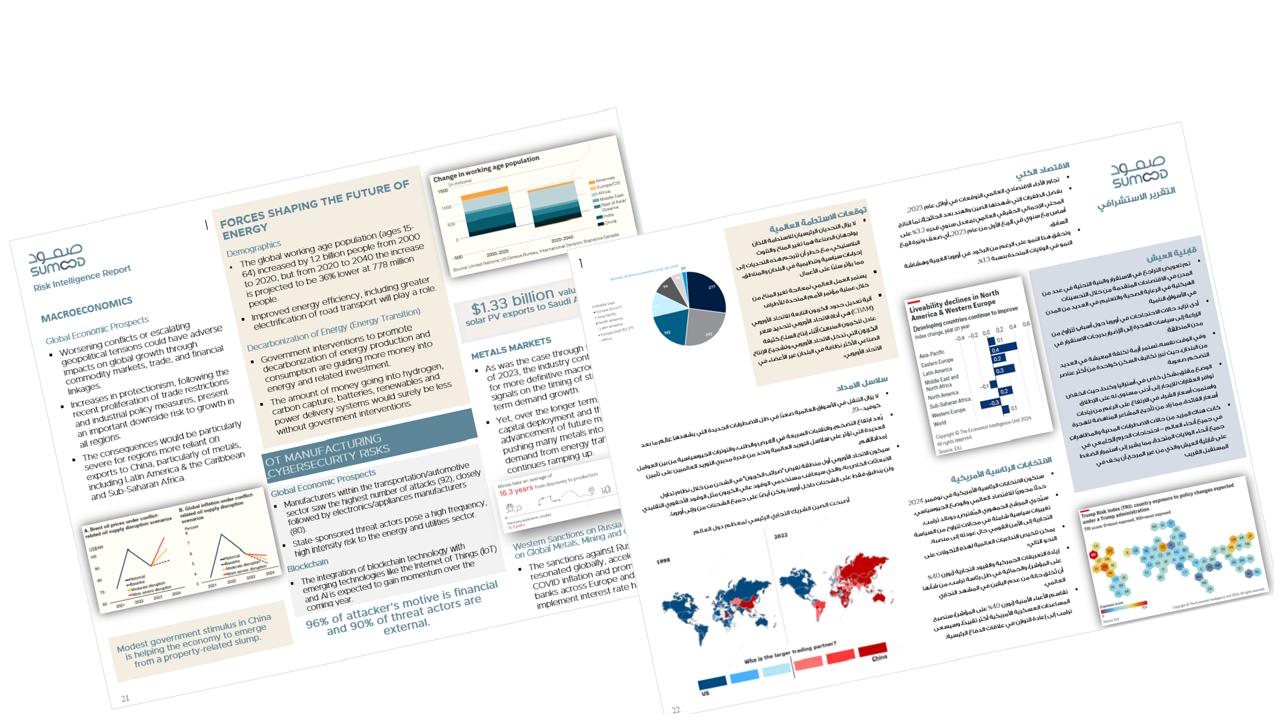Research & Foresight
Our specialized research and analytical services enable clients to anticipate emerging threats, adapt to regulatory changes, and identify strategic growth opportunities.
We support our clients in:
Trend Analysis: In-depth studies of emerging risks, market shifts, and industry best practices.
- Trend Analysis: In-depth studies of emerging risks, market shifts, and industry best practices.
Foresight & Forecasting
- Market & Competitor Analysis: Evaluation of industry developments, competitor activities, and macroeconomic trends.

Jun 25, 2025
Oil and Gas Prices, Inflation, and Energy Costs
Geopolitical turmoil in the Middle East has repeatedly sent shockwaves through world markets.
- It is often boosting crude oil and natural gas prices, raising inflation and energy costs worldwide.
- For example, oil prices jumped about 6% after Oct 2023, which warned that any wider war could produce a “dual energy shock” driving up oil and food prices globally.
- Because roughly 18–19 million barrels per day of crude (nearly 20% of world oil) pass through the Strait of Hormuz, even limited hostilities add a sizable “geopolitical premium” to oil prices.
- Brent crude oil has climbed by approximately 20% in June 2025, marking its largest monthly gain since 2020.
- While the recent price surge is relatively moderate, it comes three years after Russia’s invasion of Ukraine — an event that sparked a spike in energy prices, fueled global inflation, and prompted sharp interest rate hikes.
- Sustained oil above ~$100/barrel would cut roughly 1 percentage point off global GDP growth and add ~1 point to inflation.
- Higher oil and gas prices raise operating costs for energy-intensive manufacturing (chemicals, steel, glass, etc.) and make fuel dependent supply chains more expensive.
- Rerouted shipping has already boosted global freight indices: container shipping costs remain volatile
- Manufacturers may see profit squeezes as they absorb higher import and transport costs or pass them on to buyers.
- Energy and defense stocks often rise on Middle East tensions, while travel related and import-dependent firms face headwinds.
Trade Route Disruptions and Supply Chains
- Middle East instability can choke key shipping lanes. The Strait of Hormuz carries about 20–25% of world oil exports.
- The attacks on ships in the Red Sea early 2024 impacted the Suez Canal traffic, forcing long reroute around the Cape of Good Hope that raised delivery times by roughly ten days and boosted costs, delaying deliveries and straining supply chains.
- As a result, traffic through the Suez Canal – the shortest link between Asia and Europe – plunged ~50% year-over-year in Jan–Feb 2024.